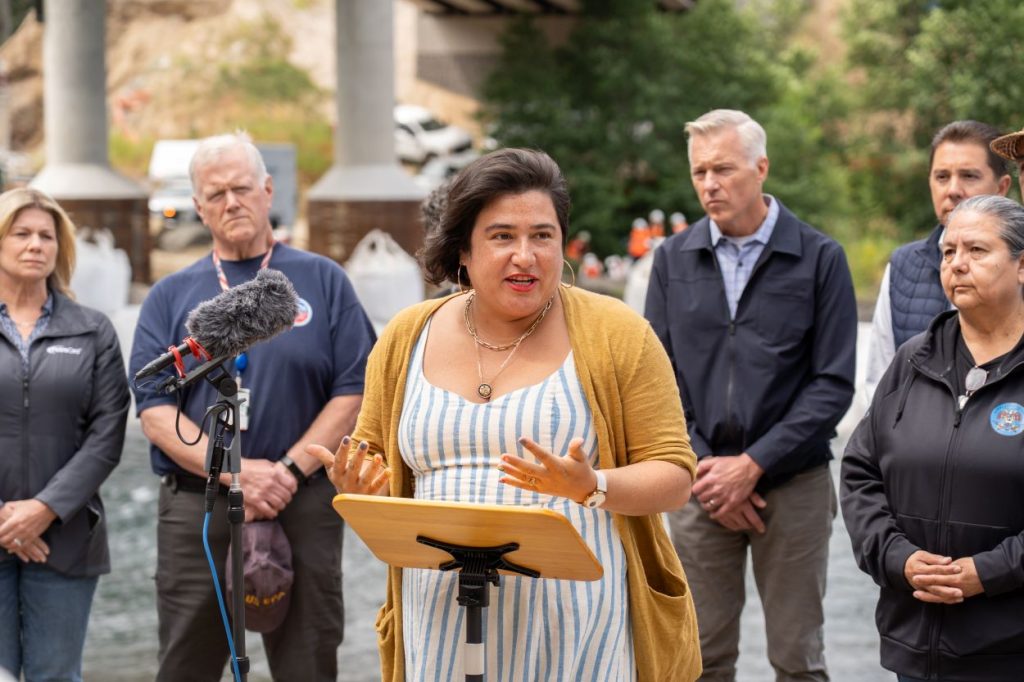PORT ANGELES—On July 18, 2025, a fuel tanker truck accident on Highway 101 near the Elwha River Bridge in Port Angeles, Washington, resulted in an estimated 3,000 gallons of diesel and gasoline spilling into Indian Creek, a tributary of the Elwha River, the city’s primary potable water source. The incident triggered a rapid response from local, state, and tribal authorities, leading to a temporary “Do Not Drink” order for Port Angeles residents, which was lifted by Sunday evening, July 20, after water tests confirmed no contamination.

Governor Bob Ferguson described the spill as a “serious incident” but praised the coordinated response that mitigated further damage, emphasizing the ongoing efforts to address environmental impacts and restore the affected area.
The accident occurred when a Petro Fuel tanker, carrying 6,000 gallons of diesel and 3,900 gallons of gasoline, veered off Highway 101 and overturned in Indian Creek. The Washington State Patrol cited the driver for negligent driving in the second degree.
Immediate action was taken to remove the tanker from the creek by Saturday morning, July 19, with cleanup crews deploying containment booms and absorbent materials to limit the spread of fuel. The Department of Ecology, alongside local fire departments, tribal partners, and state agencies, including the Washington State Department of Health and the U.S. Environmental Protection Agency, worked to assess and address the spill’s impact.

The Elwha River, which Indian Creek feeds, is critical to Port Angeles, supplying drinking water to approximately 20,000 residents. Following the spill, the city shut down its water treatment operations and issued a “Do Not Drink” order on Sunday morning, July 20, as a precautionary measure.
Water samples were tested throughout the day, and by 5:15 p.m., Sunday, July 20, officials confirmed the water was safe for consumption, lifting the order after approximately nine hours. During this period, the city’s reservoirs reached critical levels, prompting a call for voluntary water conservation to allow time for recharging.
“We are very grateful to our community for stepping up to conserve water over the weekend, and for the countless City staff, volunteers, community partners, and State and local government agencies who came together to ensure drinking water is available to residents when it’s needed,” said City Manager Nathan West.
To support residents, the city distributed approximately 81 pallets of bottled water on Sunday, with police, fire, parks, and public works personnel delivering supplies to critical facilities like Olympic Medical Center and residents unable to access distribution sites. The city also advised limiting water use to essential needs, such as drinking, cooking, and hygiene, while discouraging non-essential activities like car washing or lawn irrigation.
Governor Ferguson visited the site on Sunday, accompanied by U.S. Representative Emily Randall, Lower Elwha Klallam Tribal Chair Frances Charles, Department of Ecology Director Casey Sixkiller, and other officials.
Ferguson highlighted the spill’s environmental impact, particularly on the Elwha River, which has been the focus of significant restoration efforts, including the removal of two hydroelectric dams starting in 2011 to revive salmon populations.
“There’s no question this accident is a serious incident, and it will take time to understand the full impact,” said Ferguson. “So much investment has gone into this area, especially supporting fish restoration. This is a setback, but it could have been far worse. It’s largely because of the immediate response by so many levels of government, organizations and individuals that we were able to quickly contain the spill and prevent further damage. That’s what the people expect — to see different levels of government coordinating with tribes, individuals and organizations to respond quickly. That’s certainly been the case here.”
The Lower Elwha Klallam Tribe, which has long advocated for the Elwha River’s restoration, expressed concern over the spill’s impact on Indian Creek, described as a vital and productive tributary.
The spill’s effect on local salmon populations, including juvenile salmon, sculpin, and lamprey, is under close monitoring by state and tribal partners. Cleanup operations continue, with the Department of Ecology working to determine the total volume of fuel released and its long-term environmental consequences.

Author: Mario Lotmore









